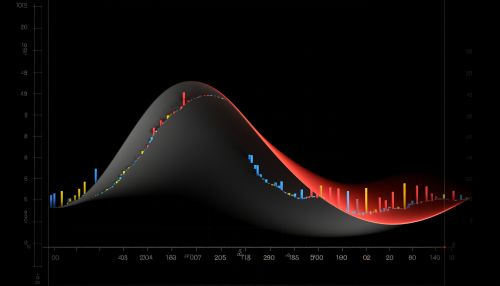Confidence Interval
Introduction
In statistics, a Confidence Interval (CI) is a type of estimate computed from the statistical data of a studied population. The confidence interval generates a range of values which is likely to contain the true value of an unknown population parameter. The range is defined by the confidence level that is the frequency of possible confidence intervals that contain the true value of the unknown population parameter.
Definition
A confidence interval is an interval estimate combined with a probability statement. This interval estimate might contain the value of the unknown population parameter, and the probability statement relates to the degree of confidence that the interval estimate has been calculated to contain the parameter.
Interpretation
The correct interpretation of a confidence interval is probably one of the most misunderstood aspects of this statistical concept. A confidence interval does not predict that the true value of the parameter has a particular probability of being in the confidence interval given the data actually obtained.
Calculation
The calculation of a confidence interval depends on the statistical data of the studied population, the desired confidence level, and the statistical method being applied. The general steps to calculate a confidence interval are:
1. Identify a sample statistic. Since we are trying to estimate a population parameter, we need to choose a statistic based on our sample data. 2. Select a confidence level. In this analysis, the confidence level is defined for us in the problem. 3. Find the margin of error. Elsewhere on this site, we show how to compute the margin of error when the sampling distribution is approximately normal. 4. Specify the confidence interval. The range of the confidence interval is defined by the sample statistic plus the margin of error. The uncertainty is denoted by the confidence level.
Confidence Level
The confidence level, often denoted by the symbol α, is a measure of the reliability of the confidence interval. A confidence level of 95% means that 95% of the confidence intervals calculated from these random samples will contain the true population mean.
Confidence Interval for Different Distributions
The method for calculating the confidence interval depends on the way your data are distributed. The most common methods are for normally distributed data, but there are also methods for data distributed according to other distributions, such as the t-distribution, the chi-square distribution, and the F-distribution.
Limitations of Confidence Intervals
While confidence intervals are a valuable tool in statistics, they do have limitations. Confidence intervals are not foolproof. They are based on the assumption that your data follow a certain distribution. If your data do not meet this assumption, then the confidence interval may not be valid.
See Also
- Statistical hypothesis testing - Standard deviation - Margin of error


